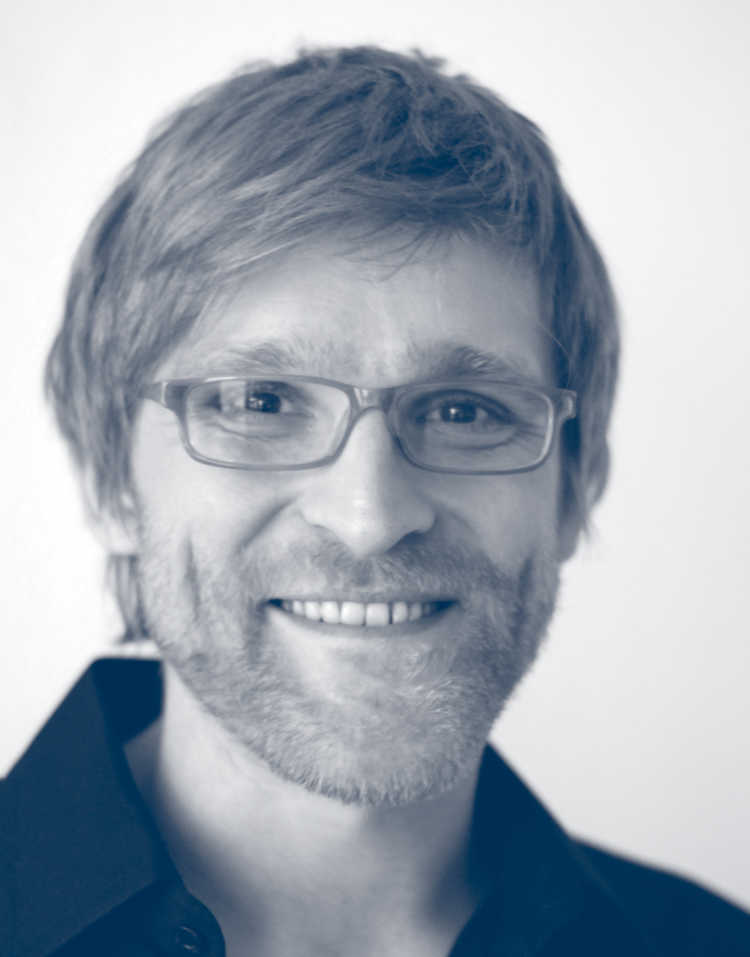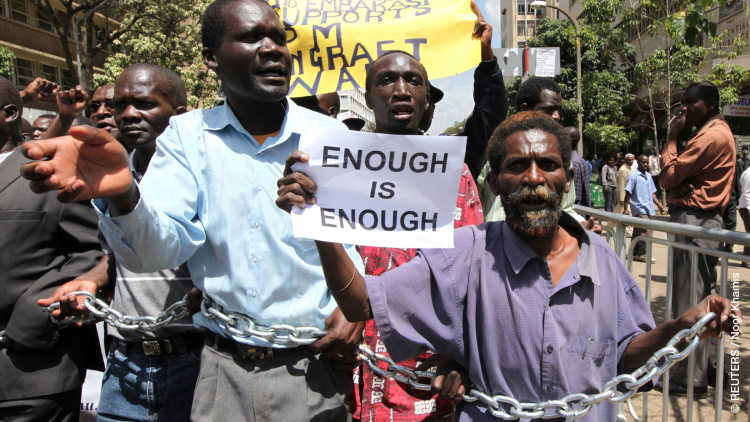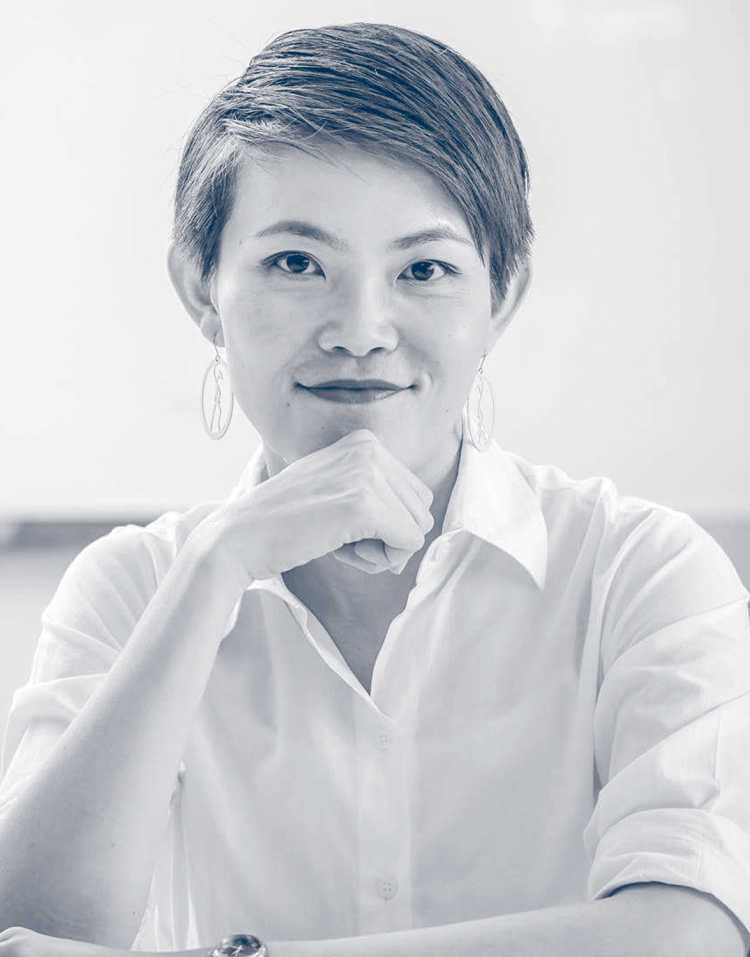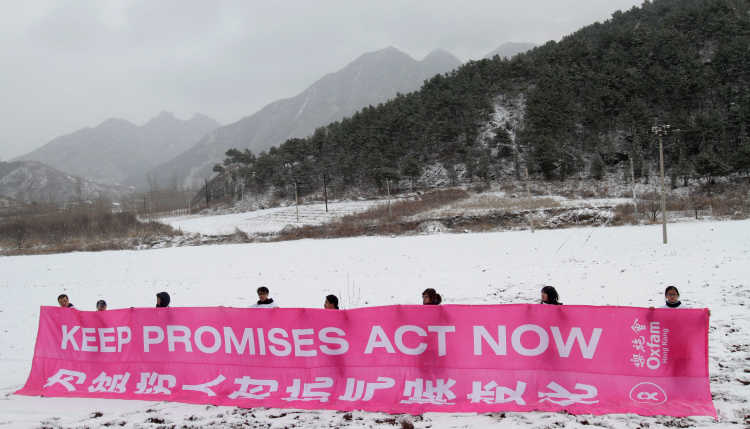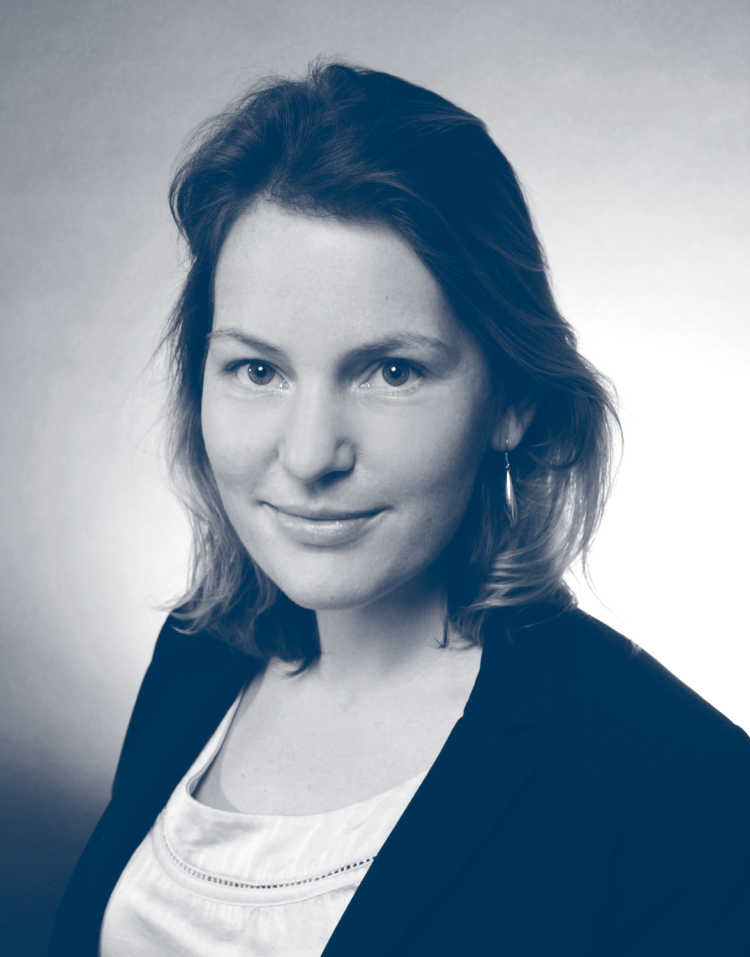- Home
- Publications
- GIGA Focus
- Reduced Scope for Action Worldwide for Civil Society
GIGA Focus Global
Reduced Scope for Action Worldwide for Civil Society
Number 5 | 2018 | ISSN: 1862-3581

Civil society actors have been increasingly watched over by state officials around the world in recent years. At the same time, they are exposed to increasing restrictions and repression. The civil society revolution of the 1980s has hence given way of late to a civil society counter-revolution.
The debates on the restriction of civil society’s scope for action are definitionally as well as empirically highly fragmented, and do not show a consistent picture. A generally applicable explanation for these developments does not exist to date, however.
Since about 2010, the historical data of the V-Dem project has shown that civic room for manoeuvre has been increasingly restricted across all regions of the world. In the historical longue durée since 1946, this deterioration is still low. In addition, there are important yet thus far largely ignored differences between world regions.
The fragmented picture is partly related to the lack of a yardstick that would define the legitimate limits of state regulation of civil society activity. Suitable instruments for measuring this phenomenon have been absent so far. If they did exist, they would have to meet three conditions: (a) reflect the diversity of state restrictions and repressive behaviour; (b) allow for comparisons across as many countries and historical periods as possible; and, (c) document restrictions and repression within one country in a uniform manner.
Research therefore sees itself faced with two central tasks: One, data on the restrictions on civil society activity must be improved. Two, efforts should be made to analyse in particular those cases that have managed to buck the global trend or to fend off such threatening restrictions.
Policy Implications
“Nip it in the bud!” should be a highly venerated credo in politics. Civil liberties for civil society actors are of great importance both practically and theoretically in democratisation processes. Therefore, the demand for compliance with them must be a central component of a values-based foreign policy in liberal democracies.
Shrinking Room for Manoeuvre for Civil Society Action
The discussion about the shrinking room for manoeuvre for civil society action is now part of the standard repertoire of democracy promotion and democratisation research. Moreover, the overwhelming majority of researchers even warn against a disconcerting increase in this phenomenon. This development is considered an extremely dramatic one, not least due to the fact that the number and significance of civil society organisations has increased considerably since the Second World War in all regions of the world. Especially since the 1980s, and at the latest from the end of the Cold War, there was a genuine “civil society revolution” (Salamon 1994). International non-governmental organisations (NGOs) – whose financial resources and therefore also their activities have greatly increased since the 1990s – have played an important role in this development (Huggett 2012). In development cooperation, the promotion of democracy by the liberal democracies of the West – spearheaded by the United States – had established itself as a separate, new sector.
Practitioners and academics agree that supporting civil society actors is central to the successful consolidation of young democracies (Diamond 1994). As the backbone of civil society, NGOs exemplify the promotion of civil rights and freedoms, the improving of gender equality, and the enhancement of state efficiency in implementing a wide range of policy objectives. For a long time civil society organisations were considered a school of democracy, in the spirit of Tocqueville; in other words, as a social space in which democratic behaviour is learned and passed on. Although formally outside the definitional core elements of a liberal democracy (free and fair elections, civil and political freedoms, division of power, effective governmental power of the elected representatives), the democratic theory of civil society has important functions for the sustainable acceptance and stability of democratic constitutional institutions (Merkel 2004: 47). The restrictions on the NGO sector that had been steadily increasing since around the middle of the first decade of the new century were quickly identified as constituting a serious attack by key representatives of democracy promotion (Carothers 2006). Still, the civil society revolution nevertheless transformed into a “civil counter-revolution” within only a few years (Rutzen 2015b).
The debates on the restriction of civil society’s scope for action remain highly fragmented, definitionally and empirically, and do not show a consistent picture. A generally applicable explanation for these developments is missing. Essentially, it comprises different processes that are attributed to varying contexts while also being simultaneously linked to one another. These include (Borgh and Terwindt 2012):
the “war on terror” (Islamist terror) waged since the beginning of the twenty-first century;
a trend towards the securitisation of development aid, meaning the more rigorous linking up of aid from the West with geopolitical interests or security objectives; and,
a discourse of state actors who deny NGOs’ legitimacy as development agents and who criminalise them especially in the context of social protests.
In addition to different names for this phenomenon – with variants such as “closing space” (Carothers and Brechenmacher 2014), “contested space” (Poppe and Wolff 2017), or “shrinking space” (Hayes et al. 2017) – it is also about very different and sometimes only partially overlapping developments. On the one hand, increasing state regulation of the NGO sector can be observed – in particular, restrictions on foreign financing. Yet, on the other, more sweeping restrictions on political rights and civil liberties are also being witnessed. This concerns, above all, the restriction of the freedom of assembly with reference to government-critical protests or the restriction of freedom of expression on the Internet. The increase in repression, intensified physical violence against activists, illegal searches of homes or offices, and the discursive criminalisation and stigmatisation of civil society organisations by state or other private actors also all play a role.
Worldwide Historical Trends
To date, any endeavour to develop an empirical presentation of the historical trends in the available scope of action of civil society across a large number of countries and regions has only two publicly available data sources at its disposal that meet scientific criteria and enable a comprehensive presentation over a longer period of time. On the one hand, there is the data from the annual Freedom in the World reports from the US NGO Freedom House (Freedom House 2018). On the other, the data project Varieties of Democracy (V-Dem), which originated in Sweden, has provided historical data on the latitude of civil society for some years now (Coppedge et al. 2018).
Freedom House’s annual report on the status of political rights and civil liberties is based on the Universal Declaration of Human Rights adopted by the United Nations General Assembly some 70 years ago, on 10 December 1948. Based on country experts’ assessments, Freedom House collects data on political and civil rights in over 190 countries (2018). This includes an assessment of the right to organise in civil society and to express collective interests, as well as to defend them (freedom of assembly and association) (UN General Assembly 1966, Article 21). Freedom House determines the implementation of this right on a scale of 13 ordinal values (0 to 12) for the time period between 2005 and 2017. The lower the value of this indicator, the more rights are restricted by government intervention. In the process, Freedom House records and summarises the status of the following three areas:
the freedom of assembly,
the freedom for NGOs to organise, and
the freedom of trade unions or similar professional associations to be active.
Unfortunately Freedom House publishes only the aggregated value of this indicator, whereby the restrictions of each individual dimension thus remain obscure. Nonetheless, these data show how often and in which regions of the world the scope for action of civil society has decreased over the last 15 years (see Figure 1 below).
The solid lines (scale 0 to 12 on the right-hand-side y-axis) in Figure 1 indicate the average level of political rights and civil liberties within each region. The lower the value, the more limited the rights of civil society were. The bar graphs (scale on the left-hand-side y-axis) document the positive and negative changes from one year to the next. Additional restrictions are shown in black.

It comes as no surprise that the rights of civil society are most intact in Western Europe and North America. In contrast, North Africa and the Middle East have the strongest limitations thereon overall. It is interesting to note that there have been a large number of additional restrictions since 2005 across all regions of the world, with significant differences from one region to the next. Deteriorations predominate only in some – and hence not all – regions of the world. For example, the overall situation of civil society rights in Eastern Europe and other post-Soviet regions, in North Africa, in the Middle East, and in large parts of Asia has stagnated at these regions’ respective levels. However, it has significantly deteriorated in Latin America and sub-Saharan Africa since 2005, as can be seen from the decline in the regional average for these two world regions in Figure 1.
An alternative presentation of the changes in the room for manoeuvre for civil society is provided by an analysis based on two indicators from the aforementioned V-Dem project. Likewise, based on the information provided by country experts, V-Dem collects indicators on:
state control of civil Society
repression of civil society organisations
This allows for a representation of civil society freedom over a longer historical period. Both indicators measure levels of governmental restriction on a scale from 0 (strongest restrictions) to 4 (no restrictions) between 1946 and 2017 (Coppedge et al. 2018: 175–176).
Figure 2 summarises the regional averages (right-hand scale of the y-axis) as well as the sum of the annual improvements and deteriorations (left-hand scale of the y-axis) of the degree of state control of civil society since the end of the Second World War. Figure 3 also shows the average levels of civil society repression by state actors. Based on these two figures, a series of observations can be made.
Comparing the first year, 1946, with the last one, 2017, the average differences between world regions are clearly visible in both Figures 2 and 3. The two indicators “state control of civil society” and “repression of civil society” are highly correlated. The corresponding values are between 0.75 and 0.92 depending on the respective region. In addition it is clear that in 2017, Europe and North America – followed by Latin America – had the least civil society restrictions on average. The freedom of civil society is most restricted in Asia and – albeit markedly less so – in North Africa and the Middle East. In these three regions, the level of average repression of civil society in 2017 is only slightly lower than what it was in 1946. Eastern Europe and the post-Soviet space as well as sub-Saharan Africa are the two regions of the world where civil liberties have developed most positively over the last 70 years. Both regions were in last place in 1946, but are now in midfield.


In addition to the relative differences between world regions, there are also varying regional trends too. Eastern Europe and the post-Soviet space had the world’s strongest restrictions on civil society until the early 1990s; yet this region would see the greatest expansion in the scope for such action within only a few years of the collapse of the Soviet Union and subsequent democratisation. By contrast, in Latin America there was a clear deterioration from the early 1960s with the rise of authoritarian military regimes – reaching its nadir in the early 1980s. Only then did gradual improvements begin to occur. It is, therefore, not surprising that the creeping return of the military in this region now gives great cause for concern (Kurtenbach and Scharpf 2018).
In North Africa and the Middle East, meanwhile, we observe only minimal change to this day. Since the early 1990s, a small incremental improvement has become apparent – although the influence of the Arab Spring has remained remarkably marginal. The bars in the diagram of Figure 3 above illustrate the simultaneity of improving and worsening civil society scopes of action since 2011. In sub-Saharan Africa, there have been two historical contexts in which the room for manoeuvre has expanded for civil society: the first was decolonisation and the second was the democratisation period beginning in the early 1990s. In Europe, the level was already very high shortly after the Second World War and has continued to improve in small increments ever since. The changes in East, Southeast, and South Asia have the most similarities to those in Latin America, albeit occurring at a much lower level. Moreover, the improvements observed in Asia since the early 1980s have hardly been as pronounced as those in many Latin American countries.
On the other hand, and as illustrated in Figures 2 and 3, in the last 10 years there has been a slight increase in state control and repression across all regions of the world. This becomes apparent from the increasing number and size of the annual deteriorations (shown in black). The increase in restrictions is also reflected in the decrease of the average regional levels. That said, this most recent restriction of civil society space is neither new nor unique. All over the world, waves of repression and state control have been recorded in the past. The best example of this is Latin America, where, as noted, between the 1960s and 1980s authoritarian military regimes massively restricted hitherto existing civil liberties and systematically repressed civil society actors. It should be noted that in some regions of the world, such as in Eastern Europe or Asia, the annual deterioration has reached a historic high – and, indeed, even exceeded it in sub-Saharan Africa. This latest wave of state repression took place amid a much higher average level of civil society freedom of action, however, than the waves of restrictions in the 1960s, 1970s or 1980s did.
In all regions of the world, parallel developments are occurring at different times – with a simultaneous intensification or reduction of civic freedom. In addition to the Arab Spring, this also applies to recent developments in sub-Saharan Africa too. The situation in West African countries has improved since about the year 2000, but has worsened markedly in some East African ones meanwhile (Smidt 2018: 2). Such parallel processes are illustrated in Figures 2 and 3 above for other world regions as well.
Motivation, Reasons, and Explanatory Factors
The real reasons for the reduction of civil society’s scope for action worldwide have not been sufficiently researched so far. Although a wide range of interpretations of the phenomenon are discussed, overall concrete and empirical analysis of regional differences is currently still lacking. Taking a historical perspective reveals a cluster of successive and partially interdependent developments as the underlying cause (e.g., Rutzen 2015a). The US war on (Islamist) terror, and in particular the Freedom Agenda formulated by President Bush, has subordinated the discourse on the role of civil society in democracy promotion since 2001 to specifically security considerations. The so-called colour revolutions that have swept Eastern Europe since 2003 have achieved considerable success thanks to the active role of civil society actors, but also led to the intensified repression of such actors by authoritarian regimes. The 2005 Paris Declaration on Aid Effectiveness – which aims to increase ownership and focus cooperation on priorities among partner countries – has also, for its part, contributed – albeit possibly unintentionally – to the strengthening of control and surveillance of international support for civil society actors (Rutzen 2015a).
Finally, globally diminishing scopes of action for civil society can be associated with the rise of anti-democratic norms in the context of (re-)strengthening global authoritarian powers such as China and Russia (Cooley 2015; Poppe and Wolff 2017). Ultimately, the increasing restrictions on human rights are also related to the successful work of civil society organisations in detecting and documenting human rights abuses. It is especially at times when governments are under international pressure to comply with human rights treaties that the work of national civil society organisations are increasingly restricted and suppressed by these governments (Smidt 2018).
In the preliminary debates on civil society forces, there was strong suspicion that limiting the scopes of action of civil society could be a problem in authoritarian or so-called hybrid political regimes (Carothers 2006). The overview presented in Figure 4 initially seems to confirm this. The figure likewise illustrates the link between the degree of repression against civil society organisations and that of democratisation, as established by the V-Dem project (Coppedge et al. 2018: 40). The presentation for all six regions of the world shows that there is a strong correlation between these two indicators for the time period ranging from 1946 to 2017. The more democratic a country is, the less repressive the government is towards civil society actors.

The comparison between the degree of democratisation and the increase in repression since the year 2000, as shown in Figure 5 below, highlights three important developments:
In North Africa and the Middle East, as well as in Asia, the further repression of civil society tends to be a problem within more authoritarian political regimes.
In Western Europe and North America, in Eastern Europe and the post-Soviet space, as well as in Latin America, the data point to an opposing trend. Here, the majority of the additional repression against civil society actors is exercised in the countries that were already more democratised.
In sub-Saharan Africa exclusively, there seems to have been additional repression across all regime types.
Overall, these representations make it clear that diminishing scopes of action for civil society can by no means be linked only to a specific type of regime. At its core, it is a problem that is global and exists across all political regime types – although it does have different regional characteristics.

An analysis of the relationship between levels of development aid and restrictions on foreign funding for civil society activities reveals, meanwhile, that both of these are interlinked in lower- and middle-income countries. Extensive external support be-ing given in fact increases the likelihood that such restrictions will be introduced (Dupuy, Ron, and Prakash 2016: 304). Restriction of civil society that the West has supported is strategically employed by national elites to, for example, win votes from their own electorate on the basis of anti-Western slogans and undertakings.
Figure 6 shows a similar relationship for five regions of the world. The left-hand scale (y-axis) shows the annual change in state repression against civil society. By means of a logarithmic scale, the left-hand scale also shows the amount of development aid (in millions of US dollars) that flows into a country through international NGOs every year. Again, there are interesting regional differences. In Eastern Europe and the post-Soviet space, as well as in North Africa, the Middle East, and Asia, a weak but clearly recognisable correlation between the level of development aid and additional restrictions can be observed. However, this seems to be only partially true for sub-Saharan Africa and nearly inversed for Latin America. Especially in the countries of the latter, higher development aid correlates slightly positively with a reduction of repression in fact.

A high inflow of development aid through international NGOs does not necessarily translate into additional restrictions for domestic civil society. A more detailed analysis of such cases, which also exist in other parts of the world too, could be helpful in the future to better understand the link between development aid and the subsequent impact on civil society’s room for manoeuvre.
Why a Normative Yardstick Is Important
The debates on restricting civil society’s scope of action are characterised by a multidimensional blurring. Part of this can be attributed to the lack of a yardstick that categorically defines which state regulations are justified regarding civil society and which are not. In addition, there is a lack of available means for measuring the scopes of action of civil society that simultaneously: (a) reflect the diversity of state restrictions and repressive behaviour; (b) allow for comparisons between all regions and across as many countries as possible, as well as over longer historical periods; and, (c) document the restriction and repression within a given country in a uniform manner.
A historical comparison based on data from the V-Dem project has shown that the recent wave of civil society constraints imposed is neither new nor unique in scale. What is striking, however, is that the amount of annual additional deteriorations in some regions of the world has reached former annual highs in Eastern Europe or Asia – and even exceeded them in sub-Saharan Africa. However the V-Dem indicators fail, as do the Freedom House data, to depict the complete or comprehensive range of the varying forms and degrees of constraints currently witnessed around the world. In particular, new state policies – such as the now-common phenomenon of cyberbullying in some countries (Sombatpoonsiri 2018) – are not taken into account. Finally, there are legitimate grounds to assume that, for instance in China, statutory regulations are applied differently within a country depending on varying bureaucratic interests (Lang and Holbig 2018).
Because civil liberties for civil society actors are of such high importance – both theoretically and practically – to democratisation processes, then the demand for compliance with them must be a central component of a values-based foreign policy in liberal democracies. Orientation on a normative yardstick of legitimate constraints could also help Western governments and international donors to better decide when government action against civil society actors should have foreign policy implications. On the whole, this could help to make the criteria of international support for civil society more transparent, thereby increasing the legitimacy of such support within the domestic societies of the partner countries. For German and European foreign policy, a better normative classification would have a twin advantage: First, it would help to avoid double standards in the evaluation of similar restrictions in different contexts. These arise, above all, when security or economic policy interests begin to thwart a values-based foreign policy. Second, a yardstick capable of distinguishing between justified and unjustified state action would help to provide a better basis for argumentation in order to prepare for the disputes subsequently ensuing about the validity of different global norms.
Translated by Cathleen Poehler.
Footnotes
References
Borgh, Chris van der, and Carolijn Terwindt (2012), Shrinking Operational Space of NGOs – a Framework of Analysis, in: Development in Practice, 22, 8, 1065-1081, https://doi.org/10.1080/09614524.2012.714745.
Carothers, Thomas (2006), The Backlash Against Democracy Promotion, in: Foreign Affairs, 85, 2, 55-68.
Carothers, Thomas, and Saskia Brechenmacher (2014), Closing Space: Democracy and Human Rights Support Under Fire, Carnegie Endowment for International Peace, http://carnegieendowment.org/2014/02/20/closing-space-democracy-andhuman-rights-support-under-fire-pub-54503.
Cooley, Alexander (2015), Countering Democratic Norms, in: Journal of Democracy, 26, 3, 49-63.
Coppedge, Michael et al. (2018), V-Dem Codebook v8, Varieties of Democracy (VDem) Project, https://doi.org/10.23696/vdemcy18.
OECD International Development Statistics (database) (2018), Creditor Reporting System: Aid activities, https://doi.org/10.1787/data-00061-en.
Diamond, Larry (1994), Rethinking Civil Society: Toward Democratic Consolidation, in: Journal of Democracy, 5, 3, 4–17.
Freedom in the World (2018), Aggregate Category and Subcategory Scores, 2003- 2018, https://freedomhouse.org/content/freedom-world-data-and-resource.
Hayes, Ben, Frank Barat, Isabelle Geuskens, Nick Buxton, Fiona Dove, Francesco Martone, Hannah Tworney and Semanur Karaman (2017), On ‘Shrinking Space’ - a Framing Paper, Amsterdam: Transnational Institute, www.tni.org/files/publication-downloads/on_shrinking_space_2.pdf.
Huggett, John (2012), Patterns of International Non Governmental Organisation’s Growth, in: International Development Policy, Policy Briefs Working Papers, http://journals.openedition.org/poldev/1175.
Kurtenbach, Sabine, and Adam Scharpf (2018), The Return of the Military, GIGA Focus Latin America, 7, December, www.giga-hamburg.de/en/publication/thereturn-of-the-military.
Lang, Bertram, and Heike Holbig (forthcoming), Civil Society Work in China: TradeOffs and Opportunities for European NGOs, GIGA Focus Asia, 6, December.
Merkel, Wolfgang (2004), Embedded and Defective Democracies, in: Democratization, 11, 5, 33-58.
Poppe, Annika Elena, and Jonas Wolff ( 2017), The Contested Spaces of Civil Society in a Plural World: Norm Contestation in the Debate about Restrictions on International Civil Society Support, in: Contemporary Politics, 23, 4, 469-488, https://doi.org/10.1080/13569775.2017.1343219.
Rutzen, Douglas (2015a), Civil Society Under Assault, in: Journal of Democracy, 26, 4, 28-39, https://doi.org/10.1353/jod.2015.0071.
Rutzen, Douglas (2015b), Aid Barriers and the Rise of Philanthropic Protectionism, in: International Journal of Not-for-Profit Law, 17, 1 1-42.
Salamon, Lester M. (1994), The Rise of the Nonprofit Sector, in: Foreign Affairs, 1, www.foreignaffairs.com/articles/1994-07-01/rise-nonprofit-sector.
Smidt, Hannah (2018), Shrinking Civic Space in Africa: When Governments Crack Down on Civil Society, GIGA Focus Africa, 4, November, www.giga-hamburg.de/ en/publication/shrinking-civic-space-in-africa-when-governments-crack-downon-civil-society.
Sombatpoonsiri, Janjira (2018), Manipulating Civic Space: Cyber Trolling in Thailand and the Philippines, GIGA Focus Asia, 3, June, www.giga-hamburg.de/ en/publication/cyber-trolling-in-thailand-and-the-philippines.
UN General Assembly (1966), International Covenant on Civil and Political Rights, ICCPR, www.ohchr.org/en/professionalinterest/pages/ccpr.aspx.
General Editor GIGA Focus
Editor GIGA Focus Global
Editorial Department GIGA Focus Global
Regional Institutes
Research Programmes
How to cite this article
Richter, Thomas (2018), Reduced Scope for Action Worldwide for Civil Society, GIGA Focus Global, 5, Hamburg: German Institute for Global and Area Studies (GIGA), http://nbn-resolving.de/urn:nbn:de:0168-ssoar-60930-1
Imprint
The GIGA Focus is an Open Access publication and can be read on the Internet and downloaded free of charge at www.giga-hamburg.de/en/publications/giga-focus. According to the conditions of the Creative-Commons license Attribution-No Derivative Works 3.0, this publication may be freely duplicated, circulated, and made accessible to the public. The particular conditions include the correct indication of the initial publication as GIGA Focus and no changes in or abbreviation of texts.
The German Institute for Global and Area Studies (GIGA) – Leibniz-Institut für Globale und Regionale Studien in Hamburg publishes the Focus series on Africa, Asia, Latin America, the Middle East and global issues. The GIGA Focus is edited and published by the GIGA. The views and opinions expressed are solely those of the authors and do not necessarily reflect those of the institute. Authors alone are responsible for the content of their articles. GIGA and the authors cannot be held liable for any errors and omissions, or for any consequences arising from the use of the information provided.





